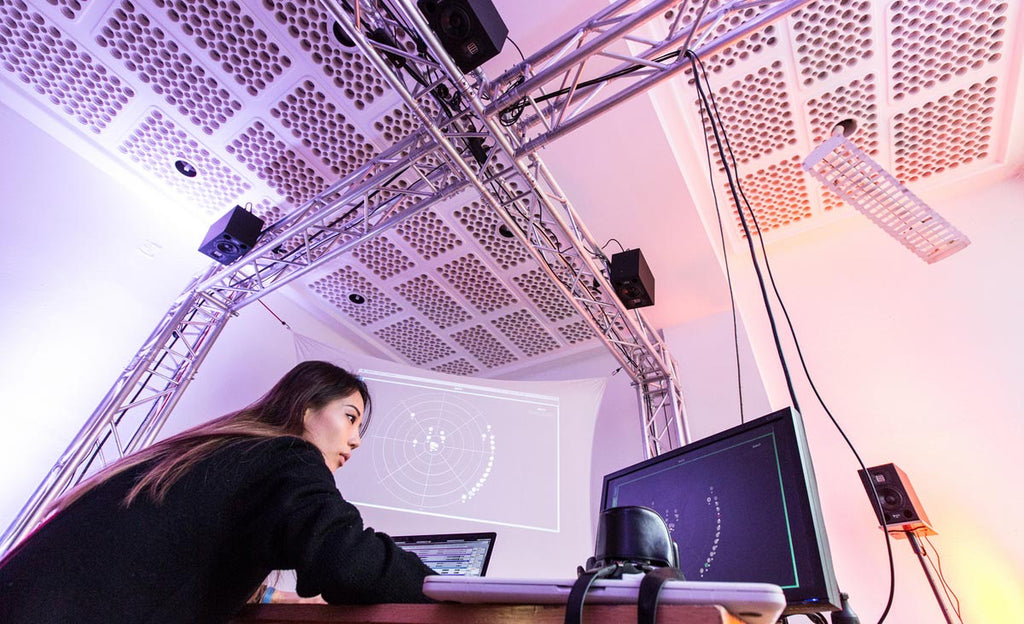HEDD's approach to Dolby Atmos®
'Right in Time'
The Dolby Atmos® format promises 3-dimensional audio reproduction by adding meta data to the audio tracks to allow the calculation and reproduction of immersive audio. To create and control the desired audio objects and place or move them exactly in or across a room the studio monitors in place play a vital role. The question we look at is whether there are different requirements compared to the 2 channel stereophonic recording and mixing.
Dolby itself, despite the classical parameters like frequency response, distortion or SPLmax values, claims a directivity pattern of at least ± 45 °from 100 Hz to 10 kHz. Available measurements show that the HEDD AMT tweeter response is -3 dB at 14 kHz only.
If monitors that meet the above requirements are compared in a 2 ch stereo set up one can find clearly audible differences still. Measurements will help to avoid different kind of nonlinearities and detect distortions, but there is no number or curve that prove a speaker to be the “better” one.

Deliver the best results
A HEDD innovation is CoP, Closed or Ported: there always have been ported (or bass reflex) and closed (or infinite baffle) type of loudspeakers, typically more powerful in the bass the first ones, more accurate and with less coloration - as there are no nonlinear sound contributions from the reflex tubes – the latter. HEDD has overcome this either-or decision situation and offers removable plugs for the ports together with corresponding filter settings that deliver the best results in either mode.
Besides the requirements mentioned above another parameter plays a role in music reproduction: accuracy in the time domain. Whereas frequency responses and their influence on the perceived sound are discussed a lot the other half of what we measure in an impulse response is little present in judging a speaker: its timely behaviour or its phase response.
Due to their frequency depending on behaviour all loudspeakers show deviations in the phase response, an inevitable consequence of the harmonic analysis that is calculated via the Fourier transform. It becomes evident that lower frequencies travel slower through speakers than middle and high frequencies, be they passive or active.

Better transient reproduction
To achieve equal travelling times through a monitor – thus getting a linear phase response - it needs a DSP that can apply FIR (Finite Impulse Response) filters that use an existing impulse response of the specific speaker model and fold it in the time domain. The result is called a linear phase response where the signal “waits” for the slower frequency contents and reinstalls a correct timely behaviour on cost of an overall delay. In the case of the HEDD MK2 monitors it is in the range between 8ms and 15ms, depending on the model and the chosen lower cut off frequency.
Audible results are better transient reproduction – one can even have a look at reinstalled peaks in the time domain - and an improved spatial representation if it is in the recording. To be “right in time” with all frequencies play an important role to keep track within the numerous monitors used and to create an accurate Dolby Atmos® reproduction. Localization of virtual sound sources and moving object based acoustical events will be “sharper” as the timely relationships within and between all monitors is correct - and therefore more natural.








